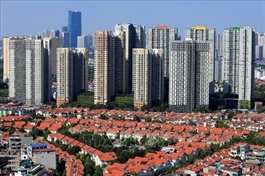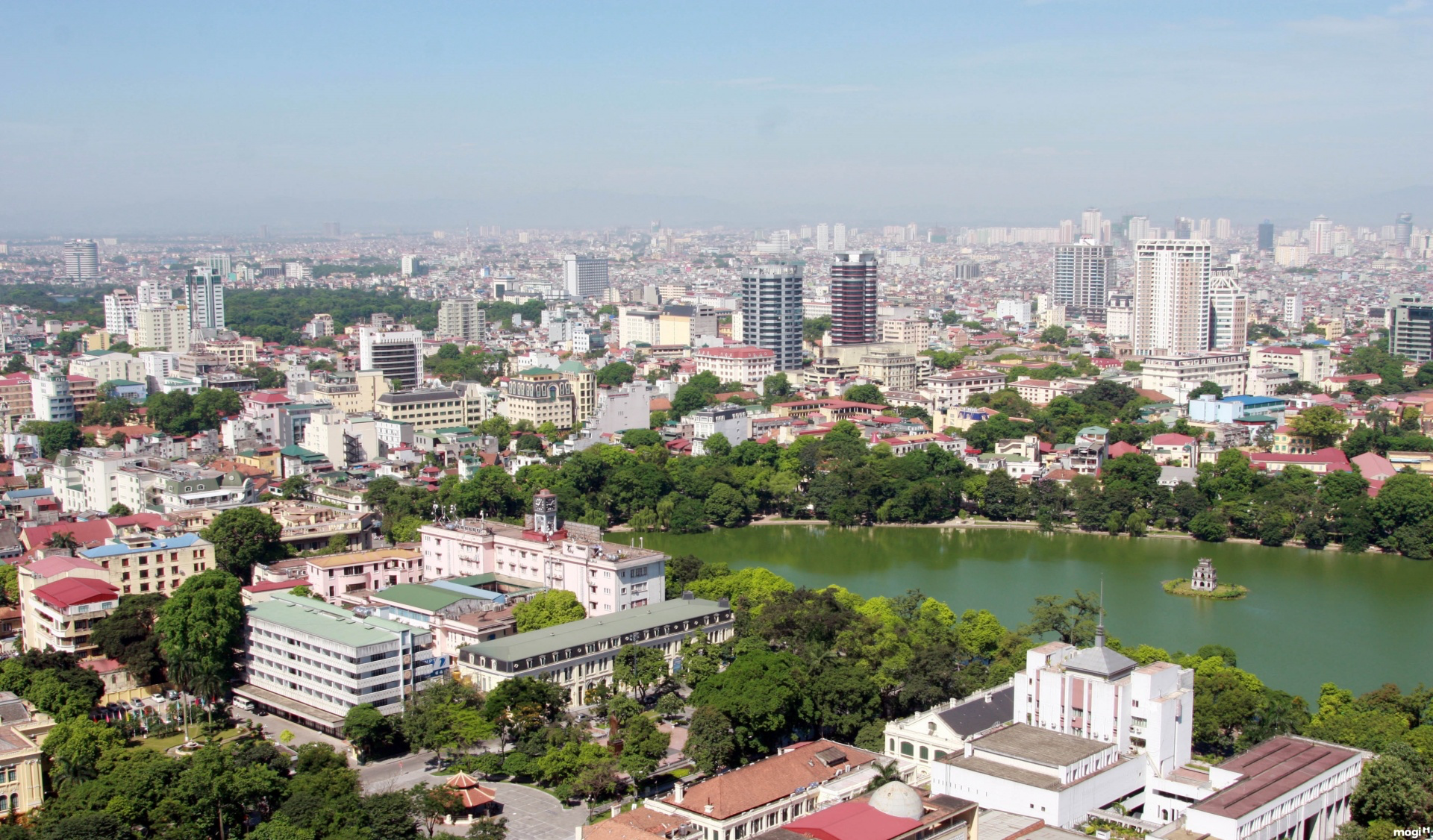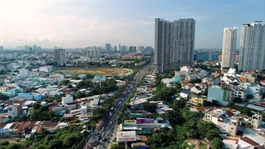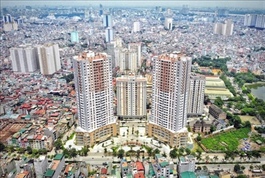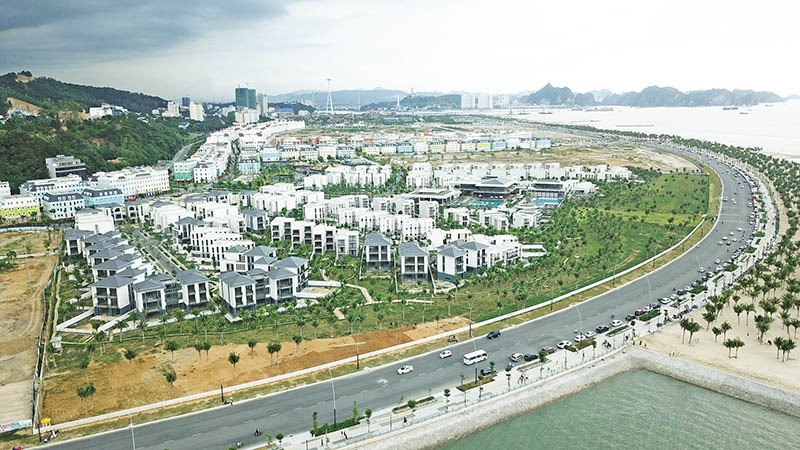Gamuda Land’s strategic regional expansion
Gamuda Land’s strategic regional expansion
Malaysian real estate developer Gamuda Land has been expanding its quick turnaround project strategy to deliver higher returns. Angus Liew, chairman of Gamuda Land Vietnam, exclusively shared the group’s development strategies with VIR’s Bich Ngoc.
Have you seen any signals of a positive year ahead for Vietnam’s residential real estate market?
The residential market in Vietnam has always been very attractive. We see that there’s an opportunity as, overall, Vietnam is a very attractive investment destination.
The reason for Vietnam’s attractiveness is simple. The GDP is in good growth and the population is big and young enough. Moreover, Vietnam is showing its attractiveness geographically. Vietnam has a long coastline, located in the middle of Asia, while the region is considered the next growth engine for the whole world. The demand for quality housing increases as people are getting more affluent and they have aspiration for a better lifestyle, especially the younger generation. Backed by 25 years of experience in the property development industry, we are confident that we understand our customers and are well-equipped to meet this increasing demand.
Since the end of last year, the Vietnamese government has tightened credit into the real estate market. This is a necessary move to make the market healthier and more sustainable, avoiding crisis bubbles and bad debt. In addition, the government has also extended the bond maturity to another two years. These are good cooling measures for the property market.
For foreign investors, we see this as an opportunity to expand our land and create a sustainable stream of projects for our Vietnam market into the future.
For purchasers, we see this is really a good year for buying homes because the price has been stable. I think that the price cannot go down more because the cost of building is increasing and so is inflation.
Gamuda Land has two major projects: Celadon City in Ho Chi Minh City and Gamuda City in Hanoi. These areas were not popular destinations before we came in, but now they become ideal destinations for people who want to upgrade their lifestyle yet live in a sanctuary surrounded by lush greenery.
Gamuda Land intends to expand its operations significantly in Vietnam through merger and acquisition deals. What factors influence the company’s decision to establish a presence in various areas?
Gamuda has been doing business in Vietnam for more than 15 years. We understand the culture, the working methods, the language, and the people’s need for not just quality, but also the need for sustainable property development in terms of well-planned and integrated towns. Plus, we have a pool of talent that we have developed over the years, who are the pillars of our business sustainability here in Vietnam.
We have been developing large-scale township developments but as much as we would prefer to focus on our core township development which allows us better flexibility to craft a master plan that suits the market demand, we foresee that land acquisition for larger plots is getting increasingly challenging.
Focus will remain on growing the business in existing territories which we are familiar with. We are also set to create an optimum balance between our township developments and bite-sized quick turnaround projects (QTPs). With the latter, we can forecast returns within five years, using these earnings to reinvest in other new projects, as opposed to township developments that require high upfront capital commitment and longer turnaround returns.
That is why we have the Artisan Park project in Binh Duong New City. Binh Duong actually fits very well with our strategy because it is one of the highest GDP per capita cities in Vietnam. Binh Duong is also an economic hub with many industrial areas and parks. This increasing industrial growth is bringing superb demand for housing.
Subsequently, we also acquired another project in Thu Duc city, the Elysian. This project is similar to the one in Binh Duong because it is located next to Saigon High-tech Park, which is in very high demand for quality housing.
However, what we are offering differently from other developers is that we put tremendous effort into improving the environment within and surrounding our projects. We have been implementing the concept of being “biophilic”, as in seeking connections with nature, in all stages of projects, from designing and building to material suppliers and so on.
Being biophilic can involve the living environment, from natural lighting and ventilation to plants and more. This philosophy makes Gamuda Land’s projects far different from others and is synchronously applied for all its projects. We also use this model in countries like Australia, the United Kingdom, Singapore, and Malaysia. For the smaller-scale developments, we switched the biophilic model from horizontal to vertical development. This requires smaller space while retaining our building design philosophy.
Are there any plans in the works for Gamuda Land to expand its developments in the north of the country?
Similar to the south, we also have a group of talented staff ranging widely in development, construction, and building management. Hanoi is a little bit different from the south in the demand and design of houses because of the weather. In Gamuda City, we have completed around 35 per cent of the 274 hectares, and the remainder will be developed in the coming time.
At the same time, we are also planning resources for QTPs in Hanoi and in the northern provinces of Hung Yen, Bac Ninh, Vinh Phuc, and Ha Nam, which we can expect benefits from within 5-7 years.
Meanwhile, in the south and apart from Ho Chi Minh City, we are looking for new projects in Binh Duong, Dong Nai, and Long An provinces, and in particular potential lands around ring roads 3 and 4.
Recently, Gamuda bought Deutsche Bank’s London office for $315 million as one of the city’s biggest property deals this year. Can you share more about this strategy?
The London project is a classic example of our QTP strategy. Occupied partly by headquarters for Deutsche Bank, after acquiring, Gamuda will renovate the office building, and it will involve environmental, social, and governance (ESG) aspects.
ESG makes buildings more efficient and with natural lighting, natural ventilation, and much more. In the UK, Australia, and Vietnam, we are also actively looking out for other office buildings that we can implement in the QTP model and combine with ESG practices.
What changes have you noticed in Vietnamese behaviours towards green initiatives?
There’s a lot of opportunity in Vietnam because ESG is a fairly new concept and I think we are one of the first developers to incorporate it into our constructions in this country. For example, we already boast green bio-gardens in our projects, keeping them green forever. Our well thought through master plan also brings together all the key elements in a harmonious way. They consist of architecture, the right facilities and amenities, parks and landscapes for the developments.
We are also mindful to incorporate community centres around the homes with streets that are designed for pedestrians and cyclists to minimise the usage of motorised vehicles and ensure it is easily accessed by the public to enjoy.
Apart from that, we have made ESG an integral part of the evaluation process in our business by instilling good governance through an extensive monitoring system, training, and effective communications with our vendors and suppliers.
In procurement, we apply various ISO standards and recycle the materials, usage parts, and household waste. Gamuda Land also applies local standards of LOTUS and LEED in our projects. I wouldn’t say that ESG makes construction more expensive, but instead there are long-term benefits and we are humbled to be part of a more sustainable future.




